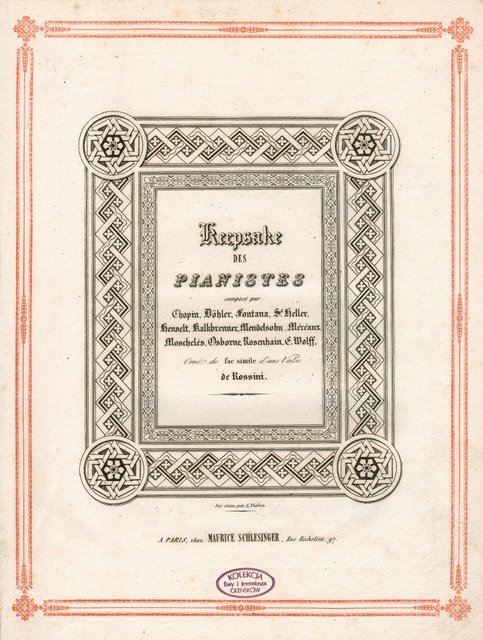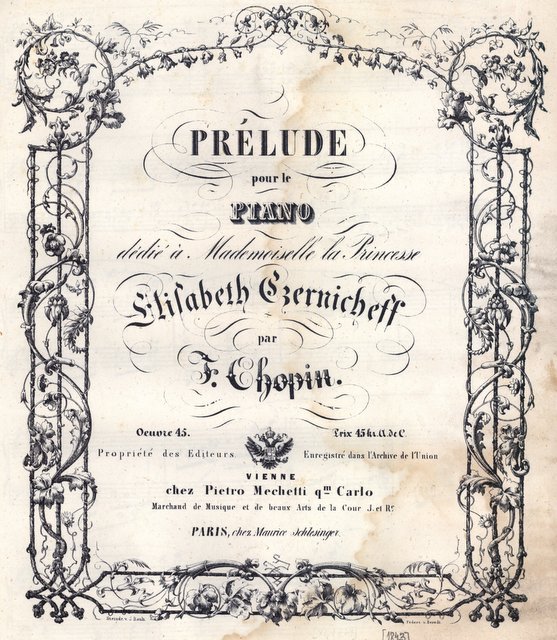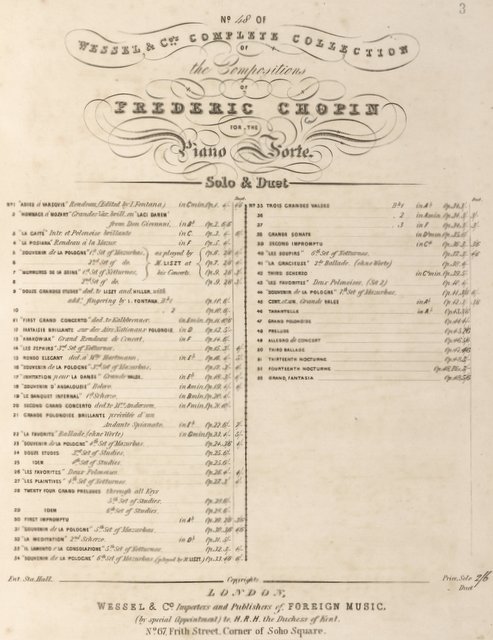



FE - French edition
GE - German edition
Filiation of the sources
Generally, the filiation and chronology of the Prelude’s sources are undeniable. However, a few specific issues pose certain problems, e.g., as far as the scope of revisions and a possible GE1 proofing by Chopin are concerned, as well as the problem of the mutual relation between two autographs, which constitute the base text for FE1 and GE1. The first issue is discussed in the characteristic of GE; here we will concentrate on an attempt to characterise the lost autographs.
The existence of two engraver’s models itself is undeniable. Chopin writes about them in a letter to Julian Fontana from 6 October 1841: “I send you the Prelude written in bigger [c]haracter for Schlesinger and with smaller for Mechetti.” Having compared two preserved Chopin’s engraver’s models of, e.g., the Polonaise-Fantaisie, Op. 61, allows us to imagine what Chopin could be thinking about when he was writing about bigger and smaller characters. The autograph which was written as the first one, with visible traces of creative ordeal in the form of numerous crossing-outs and corrections, makes an impression of the one having been written in a “bigger character.” In the second autograph, which was copied from the already developed predecessor, the clarity, transparency, and bigger density of the notation contribute to the image of “smaller character.” Therefore, it seems plausible that the text base for FE1 was the first autograph, which in this case is marked as [A1], whereas the second autograph – [A2] – was the text base for GE1. Sending the French editor the first out of two or three engraver’s models became Chopin’s constant habit in later years.
The comparison of the features of both lost autographs may be performed out of necessity only through the prism of errors and possible proofing of editions which had them as their base texts. Particularly, different, containing more elements versions of one of the editions may be generally considered as either making the notation of the base text more precise, or an omission of the second edition. The most significant difference concerning almost the entire Prelude is the consequently different pedalling in bars 5-6 and analogous. In this case, it seems impossible to indicate one of the versions as more correct than another.
As an example of a slightly more diligent and deliberate notation of [A2] (→GE) may serve: ten. in bar 17, accidentals in bar 18, rhythmic notation in bars 22 and 26, more precise dynamic indications in bars 33-35, pedalling in bars 52-55 and 84-85, dotted rhythms in bars 67 and 71, or eventually  in bar 78. However, there are a few places in which it is the version of [A1] (→FE1) that seems to be more precise: the grace note in bar 2, dashes delimiting the scope of dynamic changes in bars 55-58, 63-66 and at the end of Cadenza in bar 79, slur in bars 90-91.
in bar 78. However, there are a few places in which it is the version of [A1] (→FE1) that seems to be more precise: the grace note in bar 2, dashes delimiting the scope of dynamic changes in bars 55-58, 63-66 and at the end of Cadenza in bar 79, slur in bars 90-91.



